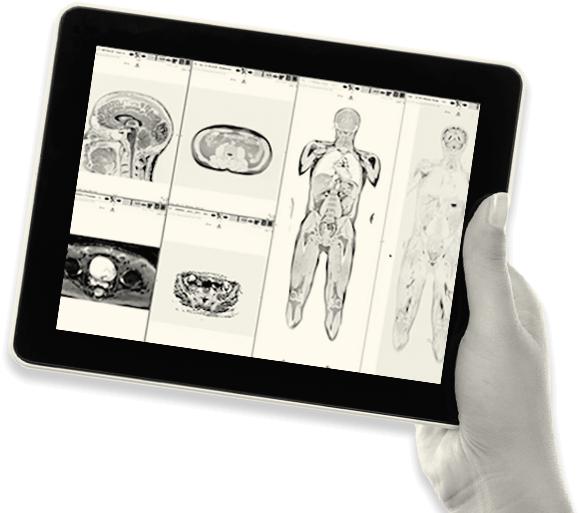THE NEXT FIVE
THE NEXT FIVE - EPISODE 9
How Tokenisation And Digital Currencies Are Changing The Future of Trade
A $1.7 trillion gap in trade financing availability has emerged. Experts discuss how we can fill it






































The Next Five is the FT’s partner-supported podcast, exploring the future of industries through expert insights and thought-provoking discussions with host, Tom Parker. Each episode brings together leading voices to analyse the trends, innovations, challenges and opportunities shaping the next five years in business, geo politics, technology, health and lifestyle.
















Featured in this episode:
Tom Parker
Executive Producer & Presenter
Karin Flinspach
Managing Director and Regional Head, Transaction Banking Europe & Americas at Standard Chartered Bank
Tim Davis
Global & US Risk & Financial Advisory Blockchain & Digital Assets Leader at Deloitte & Touche LLP
Jason Thompson
CEO of Partior
With the transcendence of digital money and technology, trade and trade finance is experiencing a major overhaul.
A $5.2 trillion global trade finance ecosystem exists today, worth 6% of global GDP, so the sector's performance affects the health of the future world economy. In this episode of The Next Five, we look at how emerging technological developments across the financial system, such as tokenisation and the emergence of digital currencies are changing how the world trades. Karin Flinspach, Managing Director and Regional Head, Transaction Banking Europe & Americas at Standard Chartered Bank, joins us to offer insight into trade finance and the outlook for large organisations in a digital trade landscape. Tim Davis, Global & US Risk & Financial Advisory Blockchain & Digital Assets Leader at Deloitte & Touche LLP, digs deeper into the emergence of Central Bank Digital Currencies (CBDCs) and what they could mean for trade. Jason Thompson, CEO of Partior, a blockchain powered value exchange, gives his expertise on the role of blockchain and what it means for the whole value chain of trade exchange and transactions.
Our sources for the show: FT Resources, Mckinsey, OECD, UNCTAD, IMF, Finance Feeds, Trade Finance Global. This content is paid for by Standard Chartered and is produced in partnership with the Financial Times' Commercial Department.
READ TRANSCRIPT
- Finance
Transcript
How Tokenisation And Digital Currencies Are Changing The Future of Trade
‘Digital Money and Trade’
‘For the only way in which a durable peace can be created is by world-wide restoration of economic activity and international trade’
-James Forrester, FMR US Secretary of Defense
INTRODUCTION
Jason: I think unilaterally deploying trade finance is very hard.
Karin: The adoption is not so much in the technology itself, but it's in the local law and regulations
TIm: there's still a lot of uncertainty as to the role of CBDCs.
TOM:
I'm Tom Parker, and welcome to the Next Five podcast brought to you by the FT partner studio. In this series, we ask industry experts about how their world will change in the next five years, and the impact it will have on our day to day. In this episode, we will explore Digital Money and Trade, how emerging technological developments across the financial system, such as tokenisation and the emergence of digital currencies are changing how the world trades.
Music Fade
Tom: Trading goods can be traced back to 9,000 years ago when settlers arrived in Egypt and traded surplus goods for ones they lacked. 4,000 years later barter turned to currency and money started to make the world go round. Traditionally, money was rooted in the physical, with precious metal, coins or notes allowing for the efficient transfer of goods and services.
However, the invention of computer systems in the early 20th century and the relative lightning transcendence of technological achievements in the last 100 years brought about the perfect backdrop for money to enter a new, digital age. Today, APIs, apps, blockchains and cryptocurrency are starting to dominate, creating a new virtual world for ‘money’ to spin.
In 2022, global trade reached a record 32 trillion dollars , mainly due to strong growth in the first half of the year. But H2 saw growth turn negative especially in the last quarter where easing of commodity prices in Q3 took a hit on trade value. While volume growth increased in Q4, suggesting a resilient demand for imported goods, and trade in environmentally friendly goods outperformed every other manufacturing sector, there are still signs of stress. The IMF is expecting real global GDP to outstrip global trade volume growth in 2023 . All of this means trade is in hyper focus, and trade finance, by de-risking the business of trade, will have to continue to play a crucial role as a key enabler of global commerce. So what is the current trade finance landscape and its importance to world trade?
KARIN:
trade dynamics are set to shift in the coming decade and high growth economies and new corridors are poised to gain from this shift leading to a rebalancing of the global trade system.
TOM: This is Karin Flinspach, Managing Director and Regional Head, Transaction Banking Europe & Americas at Standard Chartered Bank
And also this is enabled by technology. And easier access to finance means that the future of global trade is moving rapidly towards a new and more sustainable trade paradigm. And this gives opportunities to make globalisation work for more markets and more businesses. So for example, a shift from smaller and medium enterprises, from nationality from multinationals and towards a drive to more sustainable and a more inclusive model for global trade. And while in 2023, as you have said, you know, we see a decrease in trade. In celebration of trade, we expect global trade to grow 70% by 2030. And global exports, therefore, will rise from $17.4 trillion to $29.7 trillion over the next decade, which is an enormous number. And most of this trade growth will come from markets in Asia, Middle East and Africa. And there's some markets that will see the highest growth not everybody's talking about such as, for example, Indonesia, Malaysia, Nigeria, and of course, you know, other markets like India are already in everybody's thoughts. Also, beyond the geographical changes, there will be some trends that will be shaping the future of trade. And, you know, a fair and more sustainable trade model is really imperative. And you know, for example, the focus on practices that will in force or help the climate change commitments, and other social commitments, a more inclusive participation, which means, which I mentioned already, that smaller businesses have the chance to support supply chains and participate in them. And then the digitisation which will allow more transparent and secure facilitation of global trade. And so with all of that, you know, I think we will see a massive shift both in models, both in corridors and geographically reach as well.
TOM: You mentioned supporting supply chains there. 70% of trade today involves global value chains, meaning goods, parts and services cross borders multiple times before an end product reaches its final destination. This complex system, understandably, involves bottlenecks; some that trade finance inherits and that digitisation can solve. What are the challenges facing trade finance?
Karin
So a lot of the challenges are really introduced by the shocks that we have seen in terms of high energy prices, inflation and monetary tightening, and firstly, that the geographical or geopolitical shifts in supply chains and the China, US geopolitical conflict coupled with the COVID pandemic has already shown that some of the companies move to reduce the dependency on China for components. And so that's a chance for other Asian players and, you know, components provided to benefit. There's a lot of discussions around reshoring and half of the global sector North America have said that, you know, they will resort back to the Americas. But it's not just the American discussion. This is also happening in other parts of the world such as Europe, then you have the conflict in Ukraine. That is also putting a strain on supply chains and reinforces the need for more resilient supply chains. And they impose sanctions through the war. have meant that there's impact on several raw materials and sourcing strategies as well, this impacts energy, but as well, agriculture and metals, so definitely lasting shifts. And this is not just a short term bottleneck, but it will be quite permanent, we feel also, you know, some changes that have been coming and some challenges for a long time as the feasibility of the just in time delivery model is no longer there. So, we have moved already to just in case model, and to a reshoring, as I mentioned, that is happening and will be expanded over the next few years. So eventually, the digitization of trade finance will mean that all of that is accelerating, but there are other challenges beyond digitization.
TOM: So we’ve looked through the challenges facing trade finance, but how can digitising trade finance reap benefits?
TIM:
Well, many benefits in terms of digitising trade finance because so many aspects of trade finance today are so manual.
TOM: This is Tim Davis, Global & US Risk & Financial Advisory Blockchain & Digital Assets Leader at Deloitte & Touche LLP
And particularly as we think about how global commerce and trade finance works, many aspects of it are still really using email, right? It's a technology that came into existence 30 years ago. And we can do so much better with the emerging technologies, not only blockchain, but other technologies as well. The implementation of these are a little bit staggered in terms of where we're seeing successes and some difficulties. But really, a lot of it has just got to do with automation and, and efficiency. A lot of which, you know, we saw during COVID, right, we saw this massive shock to many of our global supply chains. And I think it really made a realisation to a lot of people about in some ways how fragile our global supply chains are, and how we need more robust systems to both have better transparency, but also more resilience in terms of diverting and having alternative ways in which we can flow supplies around areas of disruption. The system today for global supply chains, in many respects, is not good at this. It's quite fragile, and so is in desperate need of some improved technology that can help us do this better.
TOM: some of the technologies that can help and are being discussed are digital money, tokenisation and blockchain. But Tim, how do they help?
TIM: So tokenized money digitises money. And as we've sort of learned through crypto, what tokenized money allows us to do is to programme money. And so to some of our listeners, that may not immediately sort of make sense in terms of what that means. But as we've learned through these distributed systems, many there's things that we can do with programmable money that you cannot do with existing forms of money. And oftentimes, the question comes up isn't much of our money today, inherently digital, you know, people see a bank balance on their phone, and it looks like Well, isn't that a digital, it's just the number, yes. But all it is, is a representation of a balance sitting in a bank account, it's that that money is not programmable, because it is not tokenized. And this is the real benefit of not only tokenizing money, but tokenizing assets more broadly. And I think there's a growing level of interest in terms of how we can do so many more things we can do today with tokenized, money, and tokenized value. And it gives us the ability to disintermediate intermediaries, where we can programme a lot of this into these, essentially what is called today smart contracts, where we can be doing things more efficiently, more effectively through the use of this type of technology.
10:20: remove sound {LEAVE A BEAT HERE]
Jason: This is a really important question for me,
TOM: This is Jason Thompson, CEO of Partior, a blockchain powered value exchange.
Because we're hearing about tokenization, I think BCG led a report that said tokenized assets in 2030, would be around $16 trillion. We're also seeing fractionalization happen as assets become more readily available to a deeper section of society, which is exactly the right thing to do for Financial Inclusion. But that creates not just a higher volume of transactions of tokenized assets, it creates a higher volume of transactions as well. So the problem becomes infinitely bigger. Now, if you take something like I don't know, a digitalised, tokenised bond, and you issue that you can issue it today and say 60 seconds. But if you're clearing, the actual money movement between the banks is three days, in reality, you can issue in three days. So you can't, you can't disintermediate the tokenization of assets, the exchanges of the custodianship of that asset, and the clearing of the money, these things have to be developed in cooperation. So, you know, we're certainly looking at that as an open network, we invite tokenized asset platforms to work with us. We work with them very closely to ensure that within a single permissioned and private ledger, you can see the transaction of the asset, the value exchange, and the transaction. And that happens together simultaneously. So the minute that that doesn't happen simultaneously, and you're disintermediated from systems or the transaction, there's an opportunity for what I would describe as arbitrage error. And from a compliance perspective in a regulated industry you cannot have that.
Tom: Jason, you mentioned one part there which is around the transactions part of the chain- can you expand on that?
Jason: Yeah
I think unilaterally deploying trade finance is very hard.
So it's around the priorities. How do you prioritise elements of trade finance to digitalise them around key usage models?
For us, we're really focused on the usage models around the actual transaction.
I think transactions globally are now being criticised for cost. And depending on the currency, different inefficiencies. So you know, when we look at the major currencies in the world, such as US dollar, euro, Sterling, etc, I think there are highly efficient systems that allow them to transact between banks, less so between retail customers and merchants. but then when you start to look at emerging currencies that are not in the top 10 currencies in the world, they don't have the same service and integration. So the inefficiencies are unequal as well. So we have to look globally at how you create standards systems, and how their multilateral systems work, so we see a lot of the developments today, say India connecting with another country is a bilateral arrangement. So then you have to repeat that technology time and time and time again, with the future of the technology. We're using a private permission network, smart contracts, and distributed applications. As we bring a country or a bank online, we can then connect it to whoever's on the network and increase the efficiency. So I think, you know, the multilateral nature of the way we do things now is far more efficient.
TOM: To counter some of the issues and uncertainty of unbacked digital currencies, CBDCs are garnering much attention. Far from the realms of the conceptual, they are now in the era of experimentation. Over 100 countries are exploring CBDCs at various levels, with some already offering them to customers. The Bahamas’ Sand Dollar has been in circulation since 2021. The e-CNY has more than 100 million users and topped $15 billion worth of transactions in 2022. In the trade finance sector, 20 banks in four jurisdictions conducted over 160 payment and foreign exchange transactions in Q3 of 2022, totalling more than HK$171 million, the largest cross-border CBDC pilot to date. How can world trade take advantage of the opportunities that CBDCs offer, that is, facilitate a seamless flow of money, reduce expenses and provide customers with a safer and more resilient access to capital in the digital world.
TIM: Let me just start by saying that most developed countries now are in some phase of pilot research, or in some cases, even implementation of a central bank, digital currency. Not all Central Bank digital currencies will be token based, some of them will be ledger based. So they will look a lot more like traditional banking systems. But some countries are experimenting with the benefits of actually having a token based cbdc. So it's a little bit too early to tell how this will emerge. But I suspect you will see a mix of implementations. So those countries that are using a ledger based system will not have some of the same capabilities available to themselves in terms of the ability to programme money.
I think, if it's a ledger based system, it's going to work a lot more like what we have today. I think if they're token based systems, you then have the opportunity to be deploying smart contracts and other types of technology in how we automate trade finance. Again, this is not going to happen without us sort of building out these regulatory frameworks for how this technology gets managed, you know, but at least opens the door for a whole wave of innovation,
TOM: But what are the problems and pitfalls that still exist
TIM: The challenges that remain cbdc still have are a few. One is, there's still a lot of uncertainty as to the role of CBDCs. So governments in their experimentation are not really clear, I think, on how this is going to be different? And how should it be regulated and managed differently than how they manage money today? and I'll give you one example. In some cases, the rollout of a cbdc can lead to governments actually restraining the amount of physical cash available to try to incentivize adoption, this sometimes can actually have unintended consequences of actually making financial exclusion worse. So those people that depend on cash that may not have a traditional bank account, now may actually be in a worse situation, because they have harder access to cash that still has the same constraints with regards to actually having a smartphone and having access to the internet being able to access this new form of digital money. That's one challenge. Another challenge has to do with privacy, and what are the rights of the citizen relative to the state as it relates to surveillance as it relates to the state being able to sort of switch off a bank account if you happen to have a warrant out, you know, that type of thing. So in the US, you know, what we consider the Fourth Amendment, the sort of search and seizure rights of citizens. So that and then, you know, go and also, obviously, privacy just with citizens to one another, and also with the government, all of these topics, I think that still really have to be addressed in order to have even just citizens be willing to adopt the CDC instruments, because it's a legitimate question that governments may want to implement CBDCs because they may see it as being an avenue to mitigate money laundering risk, or to increase tax revenues. But if the citizens don't trust it, you know, they're going to frustrate those efforts. And we've seen this in some development countries in Africa that have already launched CBDCs, where there hasn't been enough of a distribution network through informal sort of retailers out sort of in more rural parts of the country. If there's not that distribution network that's actually built out that allows people that are rural that don't have ready access to banks. That it's going to have a hard time being adopted,
TOM: Karin, Stan chart are involved in a CBDC pilot - can you expand on this and any challenges?
Karin: So, with lots of new technology, and it's the same with CBDCs. The adoption is not so much in the technology itself, but it's in the local law and regulations and also in the interoperability between them and other systems. So, I think you know, we have taken place in a pilot Enbridge, which is multi-cbdc pilot and the learnings around it were really more around the legal side and meaning what is the efficient governance process that would not sacrifice the transparency of central banks? What penalties would be imposed in case of some regulatory violations? And then, you know, we can think about potential solutions. Some of the challenges were around liquidity. And, you know, how do you support as a bank sufficient liquidity both for the digital and also the traditional currencies, foreign exchange provided some of the challenges because you need really real time rates, and therefore, you know, there still needs to be solutions that need to be found. So, again, you know, the challenges that we discovered were not so much the technology, but in the area surrounding it to make it an efficient system to compete in an efficient marketplace.
TOM:What does the next five years look like? What do you want to see happen in the next five years in the trade finance sector?
Jason:
So I think when I look forward to the next five years, not just for our company's evolution, but actually the evolution of the industry, that life is going to change the way money is distributed, collected and cleared is changing. There's data benefits in terms of efficiency of lending, so we can only expect that digital money will play a big part in our life. Now then when we think about the institute's and the supply chain of digital money, and how they operate, we're seeing very different levels of development.It's a paradigm shift to the new from the old, and we're seeing that, you know, 33% of organisations are really on that journey. 33% of organisations are trying to understand how they'll get on that journey. And 33% of organisations are kind of not sure, if they're, you know, maybe they're in denial, I don't know. So I can just see that the audit will change, I can see the digital organisations heavily invested, they're gonna move forward very, very quickly.
So when we look forward, and we specifically look at two things, integration, and cooperation, now we can, we can call out cooperation, interoperability is a form of cooperation. So integration is going to change the way that systems and enterprise systems operate today in a lot of financial Institute's is systems operate as a stack inside the bank. But the way this will be in the future, you'll have a collaboration of private organisations like my own working with regulated organisations like the bank we serve. So the way that the ledger works, the Bank Ledger to a distributed ledger is going to have to change the way we integrate directly into Ledger's and become a source of truth, that is going to require banks to think more openly about their governance, but still uphold security. So there's just fundamentally different integrations that will be required to allow the future of commerce to happen. Then secondarily cooperation, it's not just about interoperability, you know, to a large degree you need to leave your ego at the door and understand we're solving huge industrial problems. One organisation will not do that. So we have to discuss, we have to be comfortable being in the same room, we have to understand the size of the problem is greater than us all. So I would say cooperation is something I look for when you have cooperation. You can find standards around interoperability, it's very easy. That's just technology. It's the cooperation that allows the technology.
Tom:Karin?
Karin: Well, I would love to have a crystal ball, but I would certainly hope that, you know, an increased adoption is driven forward by older players, because, you know, digitization is nothing new. And the benefits are very clearly there for everybody to see, and we have outlined them before. But I think it's really, really important that the adoption will be driven by regulatory change. The industry has done that competition, and the quicker, you know, banks can agree on some of these industry standards, the quicker we can make that happen, that adoption will increase. So therefore, standardisation is really very, very important. And I hope that will be the trend that will allow us to get increased adoption. So the real challenge, and the real trends, I hope will emerge are to ensure that blockchain can be used efficiently, particularly Lee and the tokenization of assets and smart contracts, and into secure record keeping. So that is hopefully something that will emerge, we have also seen, and we will continue to see increased collaboration. So that means between the businesses, between banks and other intermediaries, which is really, really necessary.
For us, it's really important that all of our markets and all the participants in these markets become really entrenched in the global trade system. And, you know, inclusiveness is very, very much a part of that, and the sustainability of this. Trade finance transactions are also very important. So the banks can play that role, but can also bring in the participants. And I think, you know, that is the overall goal in digitisation. It's not the technology itself. It's not just the efficiency, but it's really to bring in all participants to make it more sustainable, and then it will serve the global economy and ourselves much, much better.
Tom:And finally, Tim?
I think we'll see continued acceleration of this technology in the next five years. When I'm referring to this technology, what I'm referring to is blockchain, generally distributed systems. And that would mean in the cbdc construct tokenized cbdc Money, there are, as we've talked about a number of challenges that have to be overcome. But there is so much potential for this technology to be modernising and improving the way we do banking and finance, that we will continue to see the regulatory environment adapt to the responsible development of this technology.
I'd like to see in the next five years that may or may not happen is corporations and governments begin to embrace this technology much more closely that I think there's a level of scepticism and concern, either from a regulatory perspective, or an uncertainty about the technology that leads a lot of companies to not be willing to invest.
And we're still in that phase where there are a few companies that understand the true potential. But this is one of these network effects right, where once all companies begin to adopt and deploy, the technology has really started to go exponential in terms of value contribution. So I'd love to see there being more particularly large corporations, and government entities that are really thinking seriously about the true power of this technology. And we didn't talk about it much earlier. But there's tremendous power in this technology for governments to be doing their job better.
bringing this back to trade, finance, I think, you know, trade finance is really in need of modernization. And we have all the tools and the technology to be doing this better. COVID showed us that many of these global systems that we depend on are quite fragile, they're in desperate need of more resilient technology and technology that gives us more transparency, to understand how these global systems are working so that we can better manage various shocks and disruptions in various parts of the world. Blockchain technology gives us this ability and this is one of the core technologies I see as being, you know, key to unlocking the benefits of modernising trade finance.
TOM OUTRO:
After the Allied victory in World War II, James Forrestal, the first U.S. Secretary of Defense, remarked "the only way in which a durable peace can be created is by world-wide restoration of economic activity and international trade."
Times have changed since then but the sentiment still rings true after a global fight against a pandemic and ongoing conflicts that disrupt trade. What hasn’t changed much is some of the practices underpinning world trade and trade finance. Even against a backdrop of digitisation in other sectors, trade finance has been slower to modernise old processes. But it needs to catch up. A $5.2 trillion global trade finance ecosystem exists today, worth 6% of global GDP, so the sector's performance affects the health of the future world economy. In 2020, a $1.7 trillion gap in trade financing availability emerged that needs to be filled. Larger organisations are often leading the way with digitisation, and through a holistic approach the whole supply chain, including the suppliers of suppliers, can reap the advantages that the digital landscape affords. We’ve learnt today about the benefits and challenges that blockchain and tokenistion can bring but we’re heading, slowly but surely, in the right direction. But cooperation is needed, between governments and industry.
Getting it right means a new and improved global trade finance system that could see 600 million new jobs emerge in the sector by 2030. So digitisation is not just about lubricating the engine of global trade, it’s about driving the sector and the global economy towards a new and brighter future.






